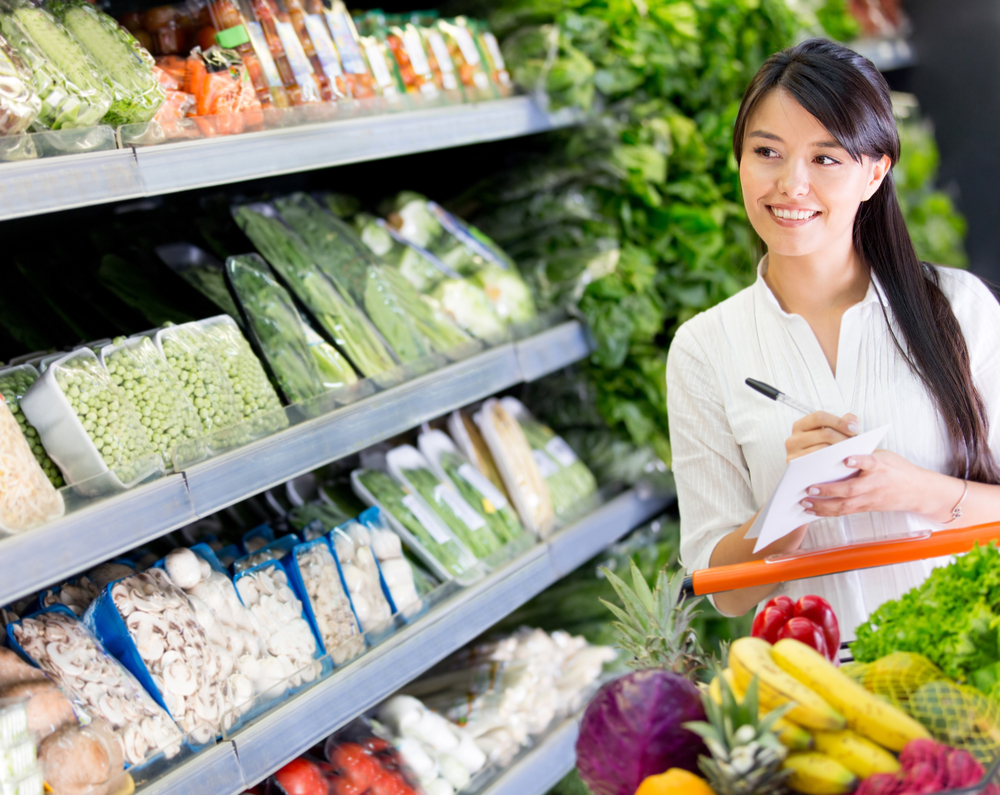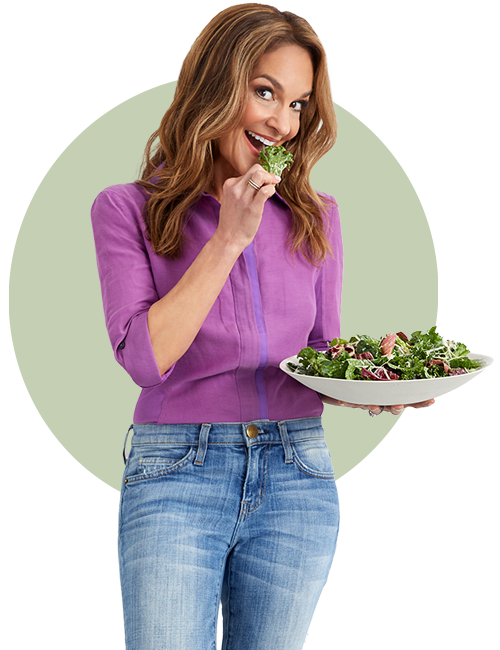2020’s Healthiest Nutrition Trends
What’s hot on the health and nutrition scene for 2020? Check out these food and wellness trends that I’m happy to support!

2020’s Healthiest Trends
What’s hot on the health and nutrition scene for 2020? Check out these food and wellness trends that I’m happy to support!

2020’s Healthiest Trends: Alternative Milks
Oat Milk & More
Moove over, soymilk. Your vegan latte’s got options with 2020 bringing delicious, new additions to the dairy aisle, including oat, cashew, and banana milk. While cow’s milk still reigns for protein (8 g per cup vs. oat 3 g, cashew 1 g, banana 1 g), the new kids bring plenty of terrific assets to the table. For example, oat milk typically contains no added sugar and also delivers beta-glucan, which may be beneficial for cholesterol. There are so many tasty new options for people with soy, dairy, or nut allergies, or for those who are lactose intolerant. Just watch out for added sugars in flavored varieties. A better bet: Opt for plain varieties like Mooala Organic Bananamilk, which is sweetened with only bananas. Oat milk is easy to find at larger grocers (for example, you can find Pacific Foods Organic Oat Milk at Target), or you can even try an oat milk latte at select coffee shops.

2020’s Healthiest Trends: Intuitive Eating
Intuitive Eating
If you’re done with yo-yo dieting, then join the growing ranks of intuitive eaters. Intuitive Eating is a behavioral approach that encourages you to tune into your body’s hunger and fullness signals (like we did when we were young children). The upshot: You get to ditch diets, weighing yourself and all the guilt that comes along with it. While there have been plenty of books and programs based on intuitive eating since the 90s, it’s regaining traction because of its link to greater self-esteem, optimism and well-being. It may also help tame emotional and disordered eating, while helping to stave off weight gain. One of the key tools is the hunger scale. To use it, give a quick check of your hunger levels before every meal. Simply ask yourself how physically hungry you are from 1 to 10, with 1 being eat-your-shirt ravenous and 10 being post-Thanksgiving stuffed. Aim to start eating at a 3 or 4, and stop when you’re satisfied and ever-so-slightly full, or around a 6 or 7. The concept entails learning how to trust your body’s signals. That means there’s no guilt, deprivation or regrets.

2020’s Healthiest Trends: Prebiotics
Prebiotics
You’ve probably heard a great deal about probiotics, the beneficial bacteria in yogurt and other foods. Prebiotics are less well-known but just as important. Although we’re not able to digest these fibers and sugars, they feed probiotics and enable them to do their job. Prebiotics are naturally found in whole grains, onions, garlic, leafy greens, beans, berries, and bananas. And they’re increasingly being added to food products from snacks to beverages to help take gut health to the next level. Snack on a Rowdy Bar with yacon root, Mama Chia Prebiotic Squeeze fruit pouches, or Banana Joe Banana Chips with pre- and probiotics. Or, sip on belly-loving prebiotic tea or kombucha like LION Dandelion Prebiotic Tea.

2020’s Healthiest Trends: Plant-Based Everything
Plant-Based Everything
The plant kingdom will once again rule the land…or at least our plates. It’s a trend that benefits not just our health but the planet’s, too. We’ll see more and more meat-plant hybrids like Applegate’s Blend beef and turkey burgers that are 30 percent mushroom. We’ll curb overfishing and avoid mercury with products like Good Catch Fish-Free Tuna, which is made of a six-legume blend of peas, chickpeas, lentils, soy, fava beans and navy beans. It still delivers omega-3s thanks to algae oil. Meatless options will also feature fruits and veggies—try pulled bar-b-que jackfruit (Upton’s Naturals Vegan Bar-B-Que Jackfruit) and mushroom jerky.

2020’s Healthiest Trends: The Mind Diet
MIND Diet
Aging Americans will stay sharp on the MIND diet. This Mediterranean-DASH collab takes the best of top-rated heart health diets and adds brain-boosting benefits to keep noggins nimble. The result is a plant-based menu loaded with vitamins, minerals and antioxidants that helps fight Alzheimer’s, improve memory and slow cognitive decline. To eat more MINDfully, focus on “brain healthy” foods, including green leafy and non-starchy vegetables, nuts, berries, beans, whole grains, fish, poultry, olive oil, and (if you’d like) wine. It also means steering clear of or limiting these brain-harming foods: red meats, butter, stick margarine, cheese, sweets, and fried and fast food.

2020’s Healthiest Trends: Booze-free Cocktails
Make mine a mocktail!
Teetotaling is going trendy. More and more people are looking to abstain, even if just for a short period of time and fortunately, there are a number of tasty, alcohol-free options like faux spirits, wellness “recovery” beers, and extended mocktail menus at restaurants. Like craft beer? Try Athletic Brewing Company’s Run Wild Non-Alcoholic IPA. Feeling fancy? Shake up a Pamplemousse Mojito Mocktail or Piña Colada, sans the rum. Just remember, no alcohol doesn’t mean no calories—bevvies can still pack on pounds if you overdo it.

2020’s Healthiest Trends: Low Waste
Low Waste
Conveniences like single-serve packaging and meal kits make it easier to eat healthfully, but they’re not always good for the environment. Thankfully, this is changing. In the future, we’ll enjoy convenience with a conscience thanks to innovative packaging. Check out Green Chef, the meal kit that uses only recyclable, reusable, and compostable packaging. We’ll also create less waste in the first place, for example, by shopping at zero-waste grocery stores, where most items are sold in bulk bins (bring your own container). Even if you don’t have one in your neighborhood yet, you can do your part with reusable produce bags from Flip and Tumble and dishwasher-safe sandwich bags from Nordic by Nature.

2020’s Healthiest Trends: Alternative Flours
Flour Power
If you thought almond flour was adventurous, get ready to experiment with even more grain-free and nut-free flour options in 2020. Breads, baked goods and pastas will get a healthy makeover from flour made from fruit, veggies, legumes and seeds—think banana, beets, cauliflower, cassava, fava beans, and chia seeds. No grains or gluten means no worries for people with allergies or for those following low-carb diets. Some come with special benefits like added protein, fiber, and other key nutrients. Add banana flour to smoothies for a dose of gut-healthy resistant starch, use chickpea flour in baked goods to bump up protein and fiber content, and incorporate cauliflower flour into zucchini bread or pizza crust for a shot of vitamin C and fiber. Look for 365 Everyday Value Cauliflower Flour or carrot and flaxseed flours in Cooggies Bare Muffin Baking Mix. And of course, feel free to use nut and seed flours like almond, hazelnut and flaxseed flours—these are tasty tried and true gluten-free options that work well in many baked goods.

